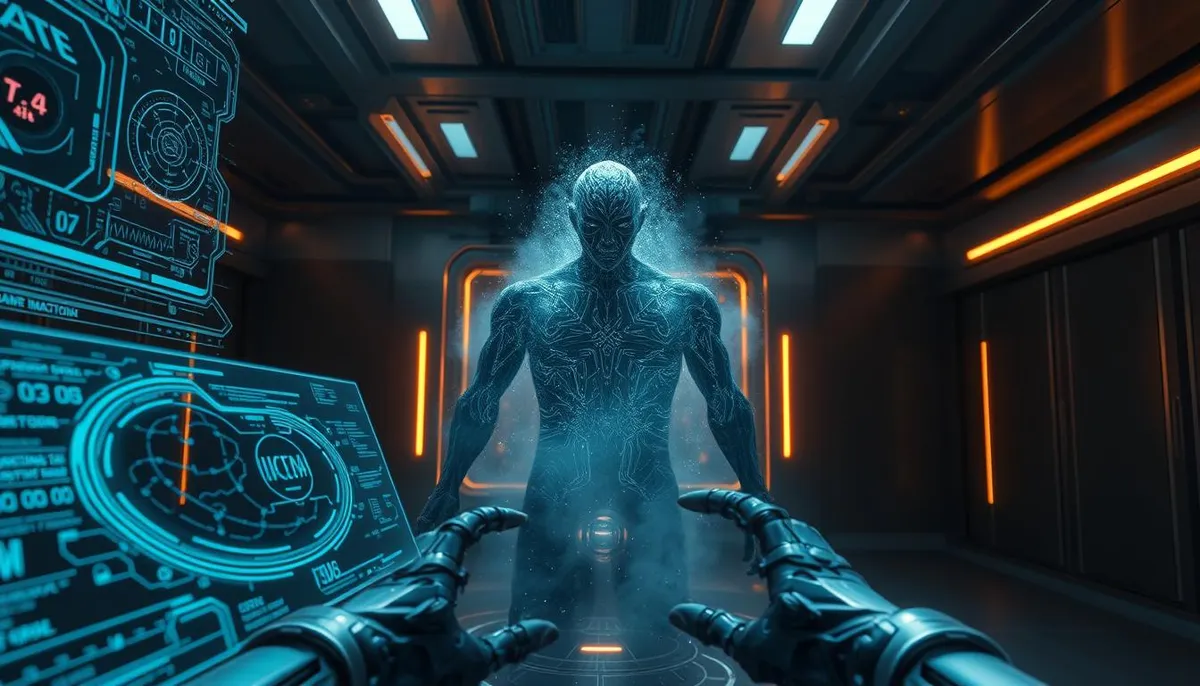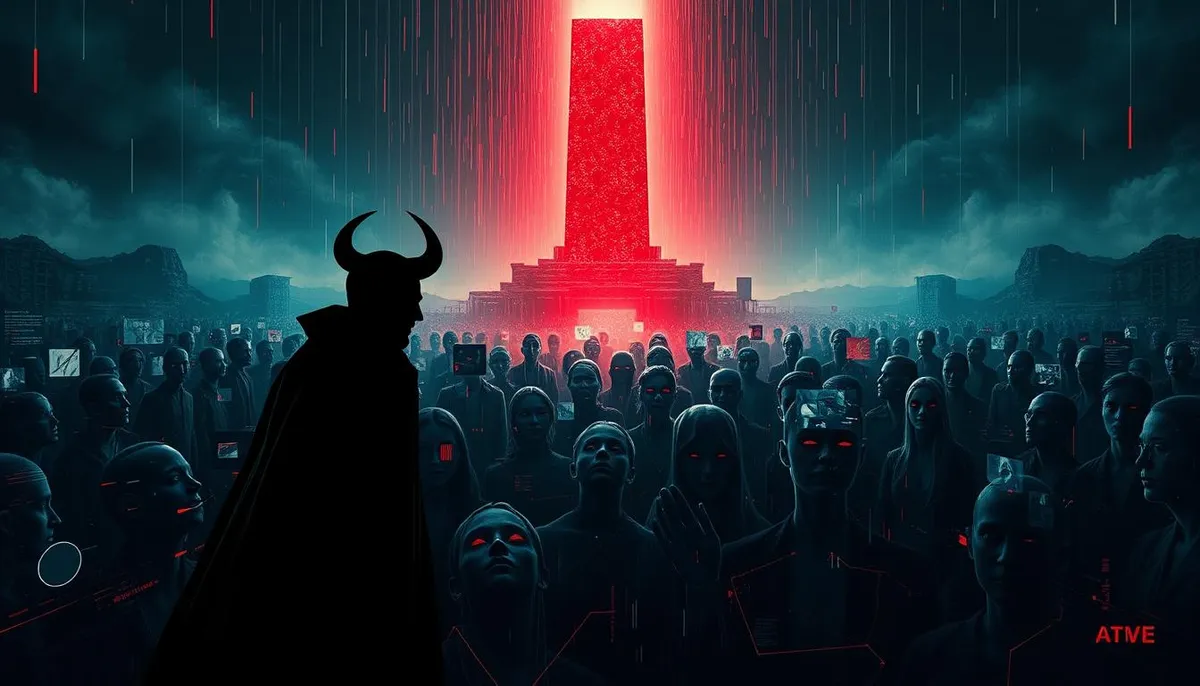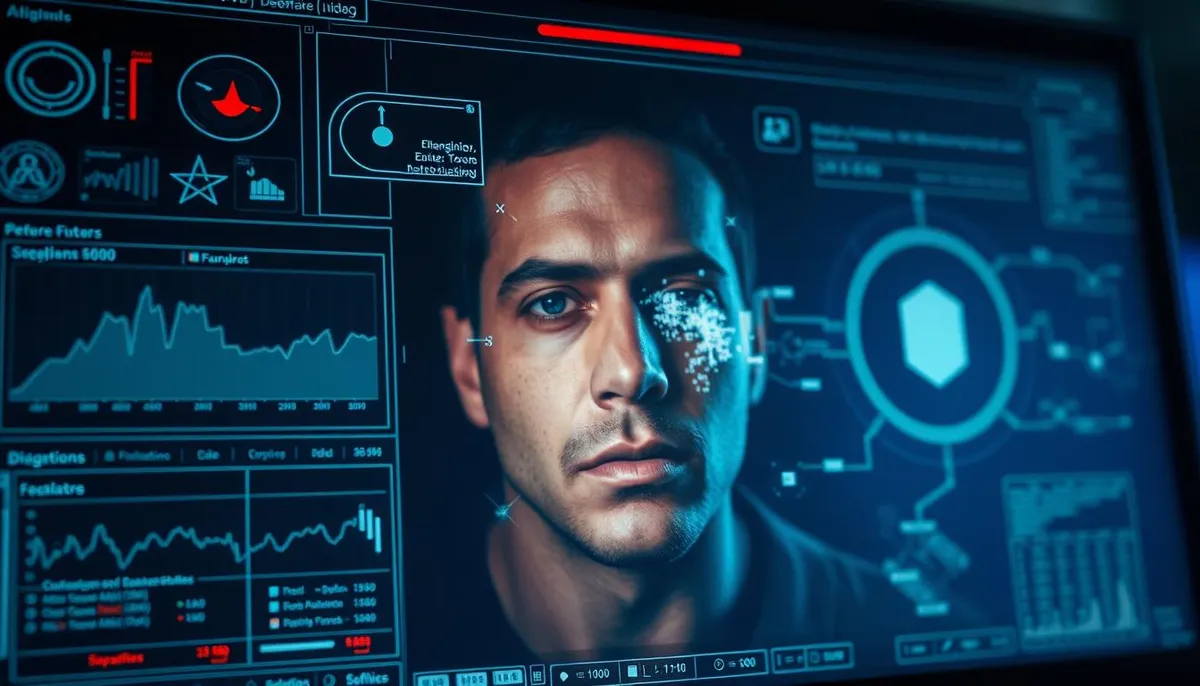The digital age has seen the birth of the fascinating yet concerning technology of deepfake. This method of video manipulation, based on generative AI, creates high-quality but entirely fictitious audiovisual content. Deepfakes pose a major challenge to our society, questioning the distinction between reality and illusion.
Imagine a video of Ukrainian President Volodymyr Zelensky calling for his soldiers to surrender. This fake video caused significant turmoil before being removed. Similarly, compromising videos of Donald Trump during the American presidential primaries were used to manipulate public opinion. These cases demonstrate the manipulative power of deepfakes.

The implications are considerable. Under the law, France punishes the dissemination of compromising images without consent (Article 226-1 of the Penal Code) and the distribution of falsified videos not identified as such (Article 226-8). These offenses can lead to fines of up to 45,000 euros and prison sentences of one year.
The proliferation of deepfakes threatens trust in digital content. With tools like FakeApp, their creation is now accessible to everyone. This increases the risks of misinformation and reputational harm. Therefore, it is essential to understand this technology to better protect ourselves.
Key Points to Remember
- Deepfakes use generative AI to create hyper-realistic but fake videos
- They can manipulate public opinion and harm individuals' reputations
- France penalizes the distribution of falsified videos not identified as such
- The democratization of deepfake creation tools increases risks
- The distinction between true and false becomes increasingly difficult in the digital age
What is a deepfake: definition and origin
Deepfakes use artificial intelligence to integrate video or audio content into existing files. This integration creates misleading or synthetic content. The term “deepfake” combines “deep learning” and “fake,” highlighting its origin in AI.
The Birth of GANs in 2014
In 2014, Ian Goodfellow created Generative Adversarial Networks (GANs). This invention paved the way for intelligent deepfakes. The technology relies on two algorithms: one creates forgeries, while the other detects them. This advancement marked the beginning of modern facial synthesis.
The Emergence on Reddit in 2017
The first deepfakes appeared in late 2017 on Reddit, thanks to an anonymous user, “Deepfakes.” These videos, often pornographic and featuring celebrities, captivated attention. In January 2018, FakeApp made creating and sharing deepfakes more accessible.
The Rapid Evolution of Technology
The evolution of deepfakes has been rapid. According to Deeptrace, the number of videos exploded, rising from 8,000 in 2018 to 15,000 in 2019. This increase raised concerns about the risks of manipulation and misinformation. Google responded in 2019 by publishing a database of 3,000 videos for the development of detection tools.
How deepfakes work
Deepfakes, this hyper-realistic deception, emerge from generative AI. They use complex techniques. At the center of this phenomenon are adversarial neural networks, or GANs, invented in 2014 by Ian Goodfellow.
Adversarial Neural Networks
GANs consist of two competing algorithms: a generator creates synthetic images, while a discriminator seeks to identify them as fake. This struggle improves the quality of the fakes at each step.
The Machine Learning Process
The learning of GANs occurs through continuous competition. The generator seeks to deceive the discriminator, which in turn sharpens its detection ability. This improvement loop is essential for the impressive quality of deepfakes.

Facial and Vocal Synthesis
To create faces, models rely on facial landmarks. Voice synthesis allows for voice alteration. These advancements make it difficult to distinguish between true and false without specialized tools.
Detecting these manipulations requires AI algorithms capable of identifying imperceptible clues. In the face of this threat, educating the public about digital risks is essential. It helps develop a reflex for systematic information verification.
The Different Types of Existing Deepfakes
Deepfakes are divided into several categories, each using video manipulation and facial synthesis in distinct ways. These technological advancements enable the creation of deepfakes that can easily deceive the human eye.
Video deepfakes are the most common. They involve replacing faces in existing videos, generating highly convincing fictional scenarios. In 2019, there were approximately 15,000 videos of this type in circulation.
Audio deepfakes, on the other hand, are more discreet. They imitate real voices, particularly used in financial scams. A notable case involved an employee who transferred 25 million dollars after a fake video meeting.
The creation of entirely fictional characters constitutes another category. These deepfakes can produce faces and voices that do not exist in reality, making the distinction between true and false even more challenging.
| Type of deepfake | Main Use | Example |
|---|---|---|
| Video | Manipulation of public opinion | Fake video of Mark Zuckerberg |
| Audio | Financial scams | Fake video meeting with a superior |
| Fictional character | Creation of fake influencers | AI-generated social media profiles |
Detecting these deepfakes remains a significant challenge. An algorithm developed by the University of Buffalo analyzes light reflections on irises with 94% accuracy. However, this is only possible for still images where these reflections are visible.
The Major Dangers of Deepfakes for Society
Deepfakes pose a growing threat to our society. They raise ethical questions related to artificial intelligence. They also present major challenges in combating these fakes effectively. Let’s explore the main dangers they represent.
Manipulation of Public Opinion
Deepfakes can harmfully influence public opinion. A notable example is the fake video of Emmanuel Macron picking up trash. This illustrates the potential for political manipulation. Additionally, 33% of French people have difficulty distinguishing real content from AI-generated content, increasing this risk.
Scams and Identity Theft
Deepfakes facilitate complex scams. A Hong Kong company lost 25.6 million dollars due to a scam involving deepfakes. The FBI reports an increase in extortion related to deepfakes, primarily targeting minors.
Non-consensual Pornography
96% of deepfake videos online are pornographic in nature, often targeting female celebrities like Emma Watson. This phenomenon raises serious questions about privacy and fundamental rights.

Impact on Democratic Processes
Deepfakes threaten the integrity of elections. In 2023, a deepfake video of Joe Biden was created to deter voters in New Hampshire. This highlights the risk to democratic processes. France has implemented severe penalties, including up to 7 years in prison and 100,000 euros in fines for fraud related to deepfakes.
In response to these challenges, the European Union has defined deepfakes in its AI Act. This provides a legal framework to address these issues. Combating deepfakes requires an ethical approach to AI and heightened vigilance from everyone.
Famous Deepfake Cases Worldwide
Deepfakes, these hyper-realistic video manipulations, have made headlines globally with sensational cases. In July 2023, a misleading video showing Emmanuel Macron announcing his resignation circulated widely. It illustrates the potential for misinformation inherent in this technology.
In the United States, Steve Kramer was fined 6 million dollars for creating a fake audio message of Joe Biden. This case underscores the risks associated with using deepfakes in the political arena.
The entertainment world is not spared. Pornographic deepfakes of Taylor Swift have been viewed millions of times on social media. Other celebrities like Robert Downey Jr., Tom Hanks, and Margot Robbie have also fallen victim to these hyper-realistic deceptions.
Scams using deepfakes are on the rise. In Hong Kong, an employee was deceived by a falsified video, resulting in a theft of 26 million dollars. In Asia, a fraudulent romance network using deepfake profiles extorted 46 million dollars from single men.
| Country | Famous Case | Impact |
|---|---|---|
| France | Fake resignation of Macron | Massive misinformation |
| United States | Fake audio message of Biden | 6 million $ fine |
| Hong Kong | Corporate scam | Loss of 26 million $ |
| South Korea | Deepfakes of minors | 88 complaints filed |
Detecting Deepfakes: Clues and Methods
Detecting deepfakes represents a crucial challenge due to the rapid evolution of generative AI. Detection methods are evolving to identify these digital forgeries, becoming increasingly realistic.
Visual Anomalies to Spot
Certain visual signs can reveal the presence of a deepfake. For example, unnatural eye movements or facial expressions can betray a forgery. Researchers at the University of Hull have created a method based on analyzing light reflections in the eyes, with an accuracy of about 70%.
Inconsistencies in Sound and Voice
The Phoneme-Viseme method, developed by researchers from Stanford and California, detects desynchronizations between lip movements and sounds. This technique allows for the detection of subtle inconsistencies in audio deepfakes.
Automated Detection Tools
Many AI tools are being created to automate the detection of deepfakes:
- Reality Defender: detects deepfakes across various media with a multi-model approach
- Sentinel: uses AI algorithms to analyze digital manipulations
- Intel FakeCatcher: detects fake videos with 96% accuracy by analyzing blood flow

Despite the advancement of these tools, detecting deepfakes remains a challenge. The constant improvement of deepfakes makes the task more complex. Vigilance and the combined use of multiple methods are crucial for effectively identifying these digital forgeries.
The Specificity of Audio Deepfakes
Audio deepfakes mark a significant advancement in the field of intelligent deepfakes. They differ from facial synthesis by focusing on reproducing voices from recordings. This technology excels at capturing the essence of a person's voice, including their intonations and rhythm.
The impact of audio deepfakes is considerable. A deepfake video showing Barack Obama with controversial statements, for example, garnered nearly 10 million views. This demonstrates the ability of such content to spread rapidly.
The applications of audio deepfakes extend beyond imitation. They pave the way for the creation of virtual characters like Lil Miquela, with convincing artificial voices. This could revolutionize digital interaction and entertainment.
In response to this threat, AI detection tools are under development. These technologies aim to identify artificial audio content. They promise to help combat audio misinformation. However, the race between creation and detection remains intense, highlighting the importance of public vigilance.
Protective Measures Against Deepfakes
The threat of deepfakes is growing, prompting innovation to combat these manipulations. Strategies are emerging to protect individuals and organizations. They aim to counter the risks of this technology.
Technological Solutions
New technologies are being created to detect and counter deepfakes:
- Robust authentication tools (two-factor verification, behavioral biometrics)
- Content certification via blockchain
- AI detection systems identifying subtle irregularities
- Data protection through advanced encryption

Legal and Regulatory Frameworks
Laws are emerging in several countries to regulate the creation and dissemination of deepfakes. These laws aim to hold creators accountable and protect victims.
Public Awareness
Education is essential in the fight against deepfakes. Training programs are being created to:
- Raise awareness of deepfake risks
- Teach how to identify manipulated videos
- Develop critical thinking regarding online content
| Measure | Objective |
|---|---|
| Employee training | Understand risks and detect threats |
| Enhanced authentication | Secure access to systems |
| AI detection | Identify sophisticated deepfakes |
By combining these approaches, society can protect itself against the dangers of deepfakes. This allows for the preservation of technological innovation and AI ethics.
The Role of Social Media in the Face of Deepfakes
Social media is essential in the fight against deepfakes. With the increase in fraud cases related to this technology, they have intensified their efforts. Their goal is to protect their users and preserve the integrity of shared information.
Moderation Policies
Web giants have adopted strict policies against deepfakes. Publishing manipulated content can lead to severe penalties. These penalties can reach up to 2 years in prison and a fine of 45,000 euros. These measures particularly target platforms like YouTube and TikTok, where the dissemination of deepfakes is more frequent.
Detection Systems
Deepfake detection relies on advanced technologies. Platforms examine abnormal eye movements and lack of blinking. They also detect unnatural facial expressions and bodily inconsistencies. Lip-sync issues and strange lighting are also identified as signs of manipulation.
Collaboration with Fact-Checkers
To counter deepfakes, social media works with fact-checkers. This collaboration allows for rapid verification of suspicious content. It helps limit the spread of false information. However, user responsibility remains crucial in the fight against misinformation on social media.
The Impact of Deepfakes on Businesses
Deepfakes pose a growing threat to businesses. This video manipulation technology exposes companies to significant financial and reputational risks. In 2020, a scam using a vocal deepfake allowed the theft of 35 million dollars in the United Arab Emirates, illustrating the extent of the danger.
Deepfake cyberattacks are multiplying, with a 13% increase noted by VMware in 2022. These attacks primarily target emails, mobile messages, and social media. Fraudsters use videos (58%) or audio content (42%) to deceive employees and access sensitive information systems.
In response to this threat, companies are strengthening their AI ethics and implementing defense strategies. Employee training, two-factor authentication, and the use of advanced cybersecurity solutions are essential. Collaboration with certified experts, such as those labeled ExpertCyber, also helps better protect against these new forms of video manipulation.
FAQ
What is a deepfake?
A deepfake is a hyper-realistic digital creation, resulting from artificial intelligence. It manipulates or generates content using Generative Adversarial Networks (GANs). These networks synthesize faces, voices, and movements, making the distinction between true and false extremely difficult.
How does deepfake technology work?
Deepfake technology relies on deep learning and Generative Adversarial Networks. It analyzes vast amounts of data to learn how to create realistic content. A “generator” network creates the fake content, while a “discriminator” network seeks to detect the fakes. This iterative cycle improves the quality of deepfakes at each step.
What are the main dangers of deepfakes for society?
Deepfakes pose major risks, including manipulation of public opinion, scams, and the creation of non-consensual pornography. They can also influence elections and erode trust in the media. These dangers are significant for democracy and society as a whole.
How can one detect a deepfake?
Detecting deepfakes involves observing visual and auditory anomalies. Unnatural eye movements, strange facial expressions, audio/video desynchronizations, and vocal anomalies are key signs. Automated detection tools are also available, but their effectiveness varies with technological evolution.
What measures are being taken to combat deepfakes?
The fight against deepfakes includes several strategies. Developing technological solutions for content authentication is crucial. Establishing legal and regulatory frameworks is also essential. Public awareness and the implementation of moderation policies by social media play an important role in this fight.
Are audio deepfakes different from video deepfakes?
Yes, audio deepfakes have distinct specificities. They focus on faithfully reproducing the voice, including intonations and rhythm. These deepfakes are particularly dangerous as they are harder to detect than video deepfakes, especially in sophisticated phone scams.
What is the impact of deepfakes on businesses?
Deepfakes represent significant risks for businesses. They can damage reputations, manipulate financial markets, and facilitate industrial espionage. Companies must develop protection and crisis management strategies in response to this threat.
How do social media platforms manage the threat of deepfakes?
Social media platforms adopt various strategies to counter deepfakes. They implement strict moderation policies, develop automated detection systems, and collaborate with independent fact-checkers. Their goal is to balance freedom of expression with the need to protect users from misinformation.
What are the positive applications of deepfakes?
Deepfakes have positive applications, particularly in the entertainment industry for creating special effects. They are also used in education for historical simulations and in art for innovative creations. The technology can dub films in different languages more naturally.
How can I protect myself from deepfakes?
To protect yourself, develop critical thinking and always verify your information sources. Use verification tools when possible and stay informed about the latest advancements in deepfakes. Media education and digital literacy are crucial for navigating this constantly evolving media landscape.
RelatedRelated articles



